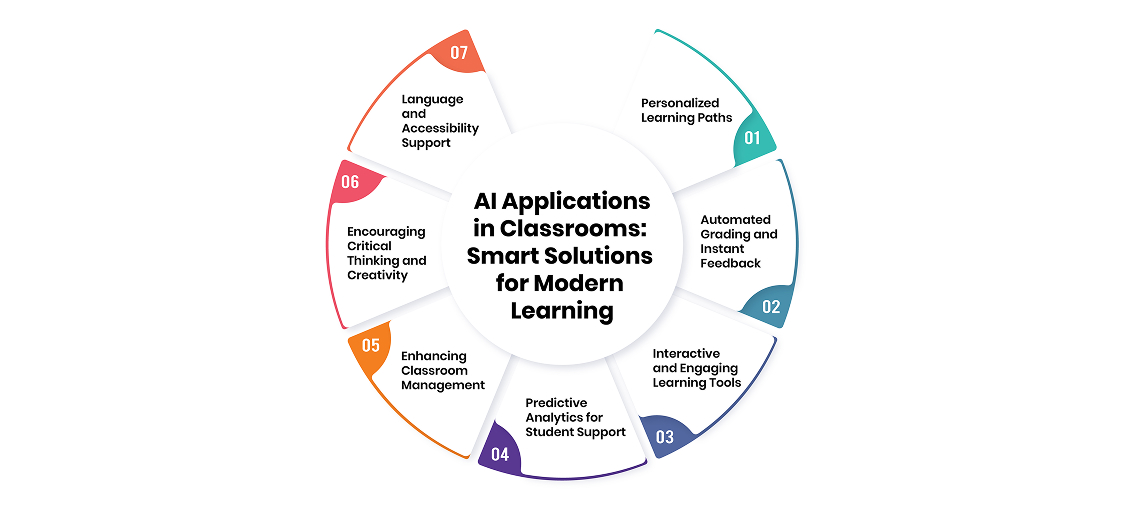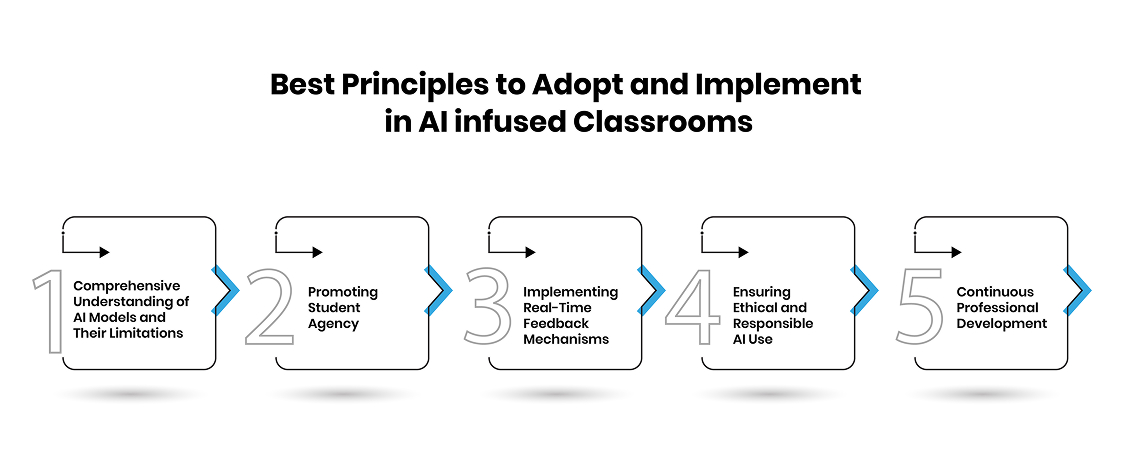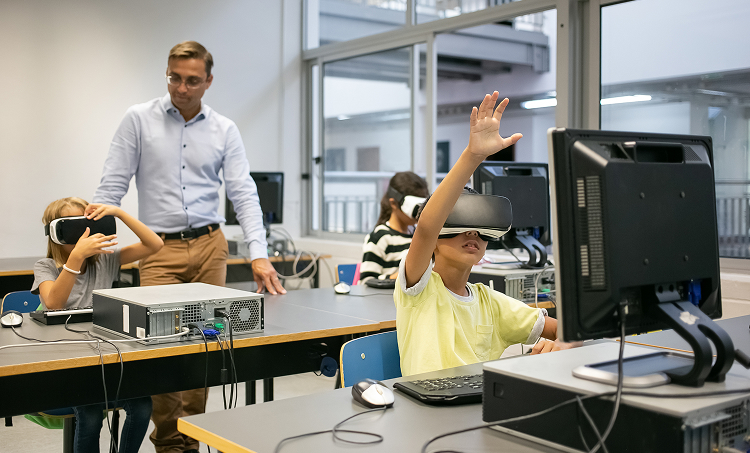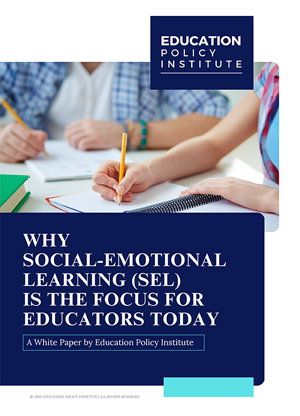Artificial Intelligence (AI) is reshaping education by introducing intelligent systems that enhance both teaching and learning. From automating administrative tasks like grading and scheduling to personalizing lessons based on student progress, AI is making classrooms more efficient and adaptive. By analyzing student performance, AI tools can identify learning gaps, provide real-time feedback, and adjust instruction to individual needs. Interactive AI-driven platforms, including virtual simulations and intelligent tutoring systems, further engage students, making learning more dynamic and accessible. As AI continues to evolve, its role in education is expanding, offering new opportunities to improve learning outcomes and support diverse student needs.
Despite its benefits, AI in education presents challenges such as data privacy concerns, algorithmic biases, and the need for educators to develop AI-related skills. Ethical and transparent practices, including clear data guidelines and unbiased decision-making, are essential for responsible implementation. While AI can significantly enhance education, it should complement traditional teaching rather than replace human interaction, ensuring that teachers remain central to the learning experience. Thoughtful integration will enable AI to serve as a valuable tool in improving education while preserving the human element in classrooms.
The AI-Infused Classroom: Transforming Education with Intelligent Learning
Artificial Intelligence (AI) is transforming education by ushering in a new era of learning—where technology amplifies teaching effectiveness and elevates student engagement. The AI-infused classroom is not merely about digital tools; it represents a shift in how education is delivered, making learning more personalized, adaptive, and data-driven. AI systems analyze student performance, adjust content delivery, and provide insights that help educators refine their teaching strategies. This integration allows students to learn at their own pace, bridging gaps in understanding while ensuring that advanced learners remain challenged.
A key aspect of this transformation is infused learning, where AI seamlessly integrates into the educational framework rather than functioning as a separate tool. AI-powered adaptive learning platforms assess individual strengths and weaknesses, providing targeted content and support. AI-driven analytics further empower educators by offering real-time insights into student engagement and progress, enabling informed decision-making. Additionally, interactive AI interfaces, such as intelligent tutoring systems and voice-assisted learning tools, make education more accessible by providing instant feedback and guidance.
Beyond individual learning, AI facilitates a blended educational environment, combining digital and physical learning spaces. Virtual labs, simulations, and global collaborations extend opportunities beyond traditional classroom settings, making education more interactive and comprehensive. However, the transition to AI-enhanced learning requires educators to adapt their roles, moving from primary knowledge providers to facilitators guiding students through AI-supported learning experiences. By embracing this shift, educational institutions can create a more inclusive, engaging, and effective learning ecosystem, preparing students for a future where AI plays a central role in various industries.
AI Applications in Classrooms: Smart Solutions for Modern Learning
Artificial Intelligence (AI) is revolutionizing education by enhancing teaching efficiency and student engagement. It goes beyond automation, supporting personalized instruction through real-time feedback and data-driven content adaptation. This integration promotes a more interactive and responsive learning environment.

-
1. Personalized Learning Paths
AI customizes learning by assessing student progress and adjusting lessons accordingly. Faster learners can advance, while those needing help receive targeted instruction. This ensures inclusivity and accommodates different learning styles.
-
2. Automated Grading and Instant Feedback
AI automates grading, reducing teachers' workload and enabling immediate feedback. Students can quickly identify and correct mistakes, strengthening their understanding of concepts rather than relying on rote memorization.
-
3. Interactive and Engaging Learning Tools
AI-powered tools like virtual simulations, gamified applications, and intelligent tutoring systems make lessons more engaging. Augmented and virtual reality further enhance understanding by immersing students in real-world scenarios.
-
4. Predictive Analytics for Student Support
By analyzing student performance and engagement patterns, AI can identify learning challenges early. This helps educators provide timely interventions and ensures that students receive the necessary support before falling behind.
-
5. Enhancing Classroom Management
AI simplifies administrative tasks such as attendance tracking and scheduling, allowing teachers to focus more on instruction. Additionally, AI-driven tools assess student engagement, helping educators adjust teaching strategies effectively.
-
6. Encouraging Critical Thinking and Creativity
AI promotes creativity and critical thinking by generating discussion prompts, facilitating debates, and supporting innovative projects. These tools guide students in refining ideas and developing problem-solving skills.
-
7. Language and Accessibility Support
AI-powered translation and assistive technologies improve inclusivity by breaking language barriers and supporting students with disabilities. Tools like speech recognition and adaptive learning interfaces enhance accessibility for all learners.
Best Principles to Adopt and Implement in AI infused Classrooms
Integrating artificial intelligence (AI) into educational settings offers transformative potential, but its effective implementation requires adherence to several best practices:

-
1. Comprehensive Understanding of AI Models and Their Limitations
Educators should familiarize themselves with a variety of AI tools beyond popular options available. This broader knowledge enables teachers to select the most appropriate tools for their specific educational objectives and to understand each model's capabilities and constraints. Recognizing these limitations is crucial to mitigate potential biases and inaccuracies inherent in AI outputs.
-
2. Promoting Student Agency
Empowering students to incorporate their personal interests into assignments can enhance engagement and reduce reliance on AI for task completion. When students have the autonomy to choose topics that resonate with them, they are more likely to view AI as a collaborative partner rather than a substitute for their own efforts. This approach builds deeper learning and critical thinking.
-
3. Implementing Real-Time Feedback Mechanisms
AI-driven tools can provide immediate feedback on student work, facilitating prompt corrections and reinforcing learning concepts. For instance, AI systems can analyze student responses in real-time, offering insights that help educators modify subsequent instruction to address specific learning gaps. This immediacy enhances the learning experience by allowing students to understand and rectify mistakes promptly.
-
4. Ensuring Ethical and Responsible AI Use
Establishing clear guidelines for AI usage within the classroom is essential. Educators should communicate expectations regarding when and how AI tools may be employed in assignments, emphasizing the importance of academic integrity. This clarity helps prevent misuse and encourages students to engage with AI ethically and responsibly.
-
5. Continuous Professional Development
Given the rapid evolution of AI technologies, ongoing professional development is vital for educators. Regular training sessions can keep teachers informed about the latest AI advancements and pedagogical strategies, ensuring that they can effectively integrate new tools into their teaching practices. This commitment to continuous learning supports the sustainable and effective use of AI in education.
Implementation, Challenges and Future Prospects of an AI-Infused Classroom
Integrating AI into classrooms requires a well-structured approach, starting with establishing the necessary infrastructure. This includes reliable hardware, internet access, and AI-driven software that supports interactive and personalised learning. Equally crucial is teacher training, ensuring educators are equipped to use AI effectively while understanding ethical concerns like data privacy and algorithmic bias. AI's integration into the curriculum should be strategic, enhancing existing learning objectives rather than replacing traditional teaching methods.
Despite its advantages, AI implementation presents challenges, including digital equity, where disparities in technology access must be addressed to ensure all students benefit equally. Additionally, the shift in classroom dynamics with AI-driven tools necessitates careful management to maintain engagement and encourage critical thinking. Success in an AI-infused classroom extends beyond test scores, with student engagement, individual progress, and teacher feedback serving as key indicators of effectiveness. AI’s role in reducing administrative burdens and providing actionable insights further underscores its value in education.
As AI technology evolves, continuous adaptation is essential. Regular feedback from educators and students, along with updates to AI applications, ensures these tools remain relevant and effective. Looking ahead, advancements in AI-powered adaptive learning, immersive technologies like augmented reality, and data-driven educational strategies promise a more dynamic and personalised learning experience. While challenges remain, AI's integration into education is set to transform traditional teaching, making learning more interactive, efficient, and accessible.
Conclusion
The integration of AI in education is revolutionizing classrooms by making learning more personalized, efficient, and engaging. While AI-driven tools enhance instruction, automate administrative tasks, and support diverse student needs, their implementation requires ethical considerations, teacher training, and strategic adaptation. Challenges like digital equity and algorithmic bias must be addressed to ensure fair and responsible AI use. By embracing AI as a complementary tool rather than a replacement for human interaction, educational institutions can create a balanced and dynamic learning environment that prepares students for an AI-driven future.





